Visual fiction: artists predict the technology of the future
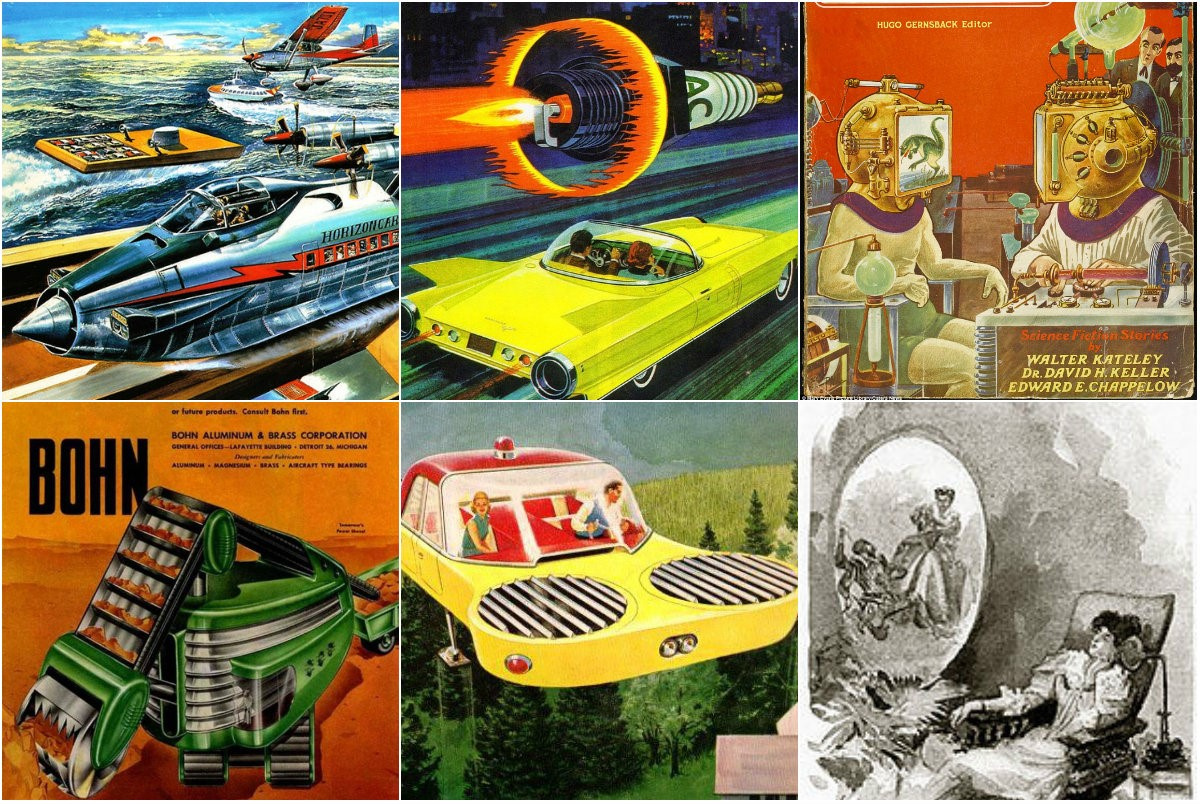
Fantastic books and films can surprise and give more information about the world of the future than real scientific discoveries. Yes, and the discoveries in our time rarely cause public shock. Subconsciously, we are ready for almost anything - the face drawn in the mind of the future only receives confirmation.
In my head there is a personal time machine that has been shaped by art for centuries. The predictions of the classics of science fiction, beginning with the era of HG Wells, remain at the hearing. But the fantastic description of the objects of the future remains a game with imagination. The artistic techniques of literature allow us to present even objects, under which the author, perhaps, meant something completely different - the experience of modern man will tell the missing pieces.
Artists are in the least favorable position. They need to illustrate a fantastic idea as accurately as possible, otherwise the magic of prediction will not work. The picture tightly captures the work of the imagination. It is even more interesting to find out which canvases do not play “guessing game” with the viewer, but visually correctly reflect the future.
Let's look at the most amazing work, predicting the future with amazing accuracy.
Real futurism
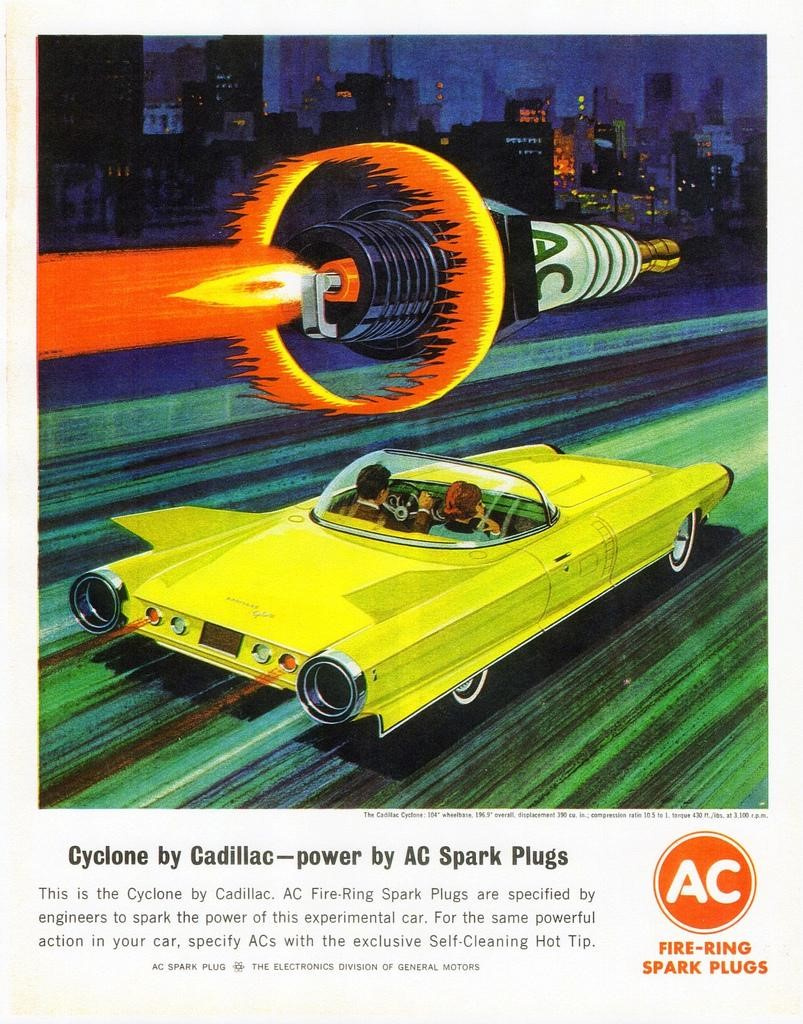
Not all the pictures that now look like pure retro-futurism are fiction. The rocket-like car pictured above really existed. This is the 1959 Cadillac Cyclone, created under the authority of Harley Earl, then Vice-President of the General Motors Design Bureau. Double Cyclone was supposed to be a fully functional machine, designed not only for exhibitions, but also for real travel. In reality, he made only a few trips - the project was closed due to the high cost of engineering solutions. That there is only one dome, covered with silver for protection against ultraviolet radiation - it opened automatically with the doors and could be removed by automatic in the luggage compartment.
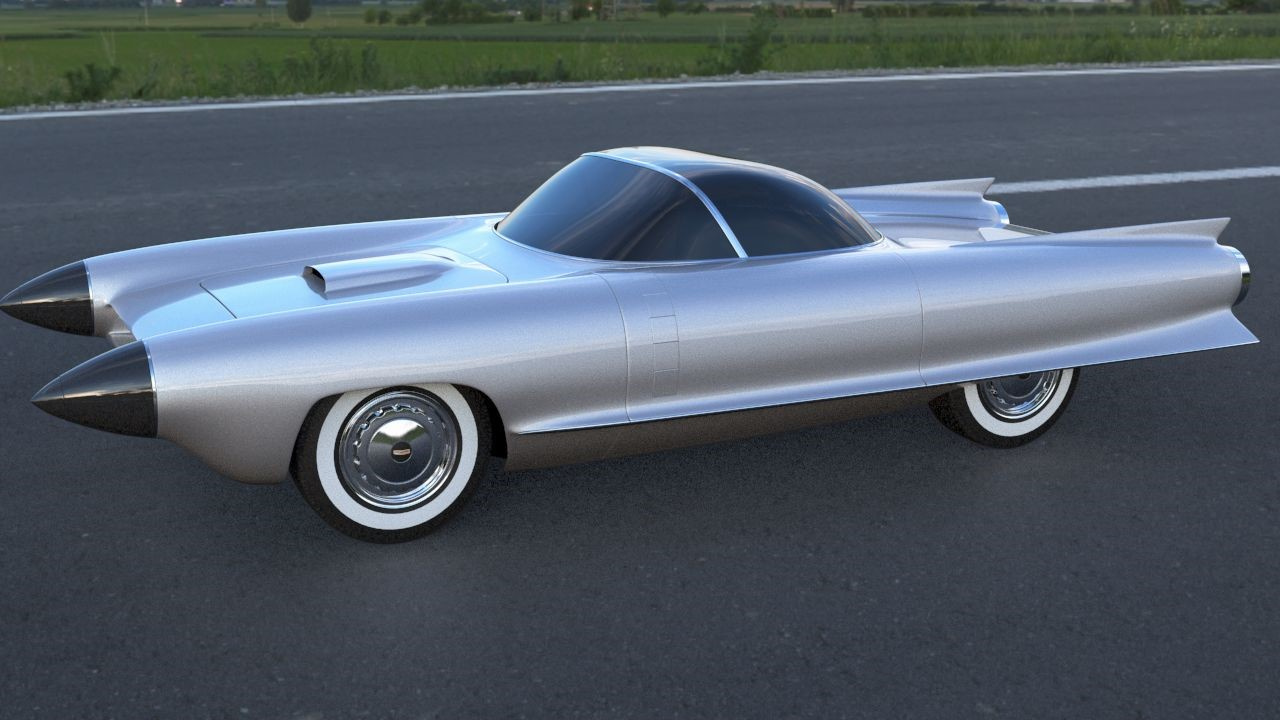
In the Drimkar installed 325-horsepower engine Cadillac V-8. Flat 4-chamber carburetor worked without an air filter to reduce the height of the body, but there was a filter air intake on the hood. The exhaust gases went through a double muffler, located in the engine compartment immediately behind the engine, and exited through the front fenders in front of the wheels. Even then, the autopilot was implemented in the car - the speed of movement and the position of the car on the road were regulated. The autopilot worked thanks to the sensors, which determined the location on the road with the help of a special strip applied to the road surface. It was assumed that in the future such coverage will become ubiquitous and autopilot will work without fail in all machines.
In addition, in the double nasal fairing, installed instead of headlights, there was a radar system, warning of obstacles on the road. A flashing LED was lit on the dashboard, the special display showed the distance to the object and the stopping distance. In a critical situation, the automatic braking system should have worked. But the information has not reached our days whether this system has been implemented. Otherwise, this car packed with futuristic engineering solutions was far ahead of its time and looked more interesting than any fantastic posters.
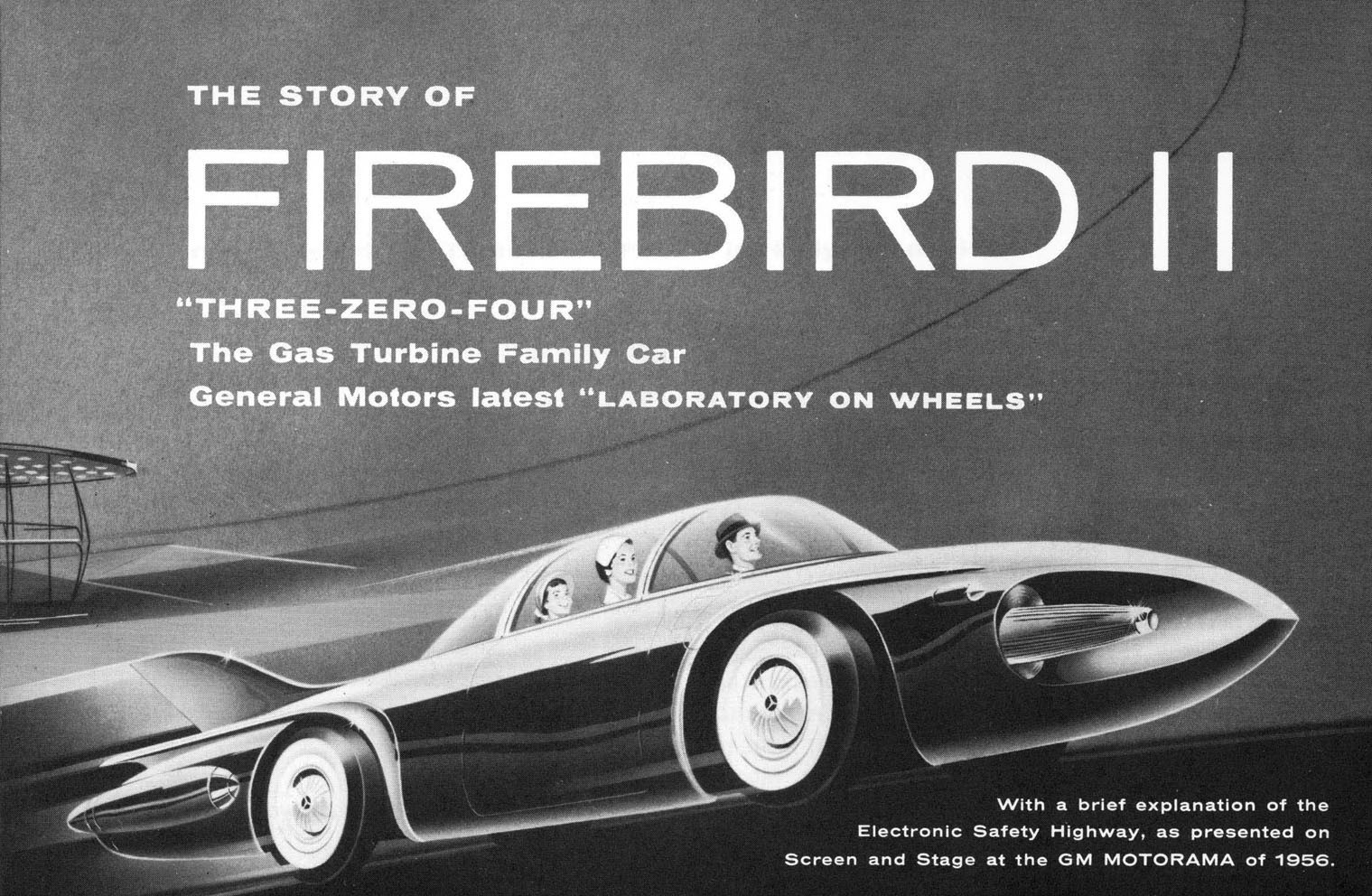
Another poster that looks like an illustration to a fantastic story, and should, in theory, reflect only the designer's thoughts about the cars of the future. But in fact, we again see a completely real car that drove along the roads three years before the appearance of the Cadillac Cyclone.
The Firebird II concept car reflected the spirit of the space race era. He looked like a plane, or even a spaceship descending from the sky onto the road. In the future, these cars could become hybrid: they would easily travel on ordinary routes, and if necessary they would take off into the air and continue to move as personal airplanes.
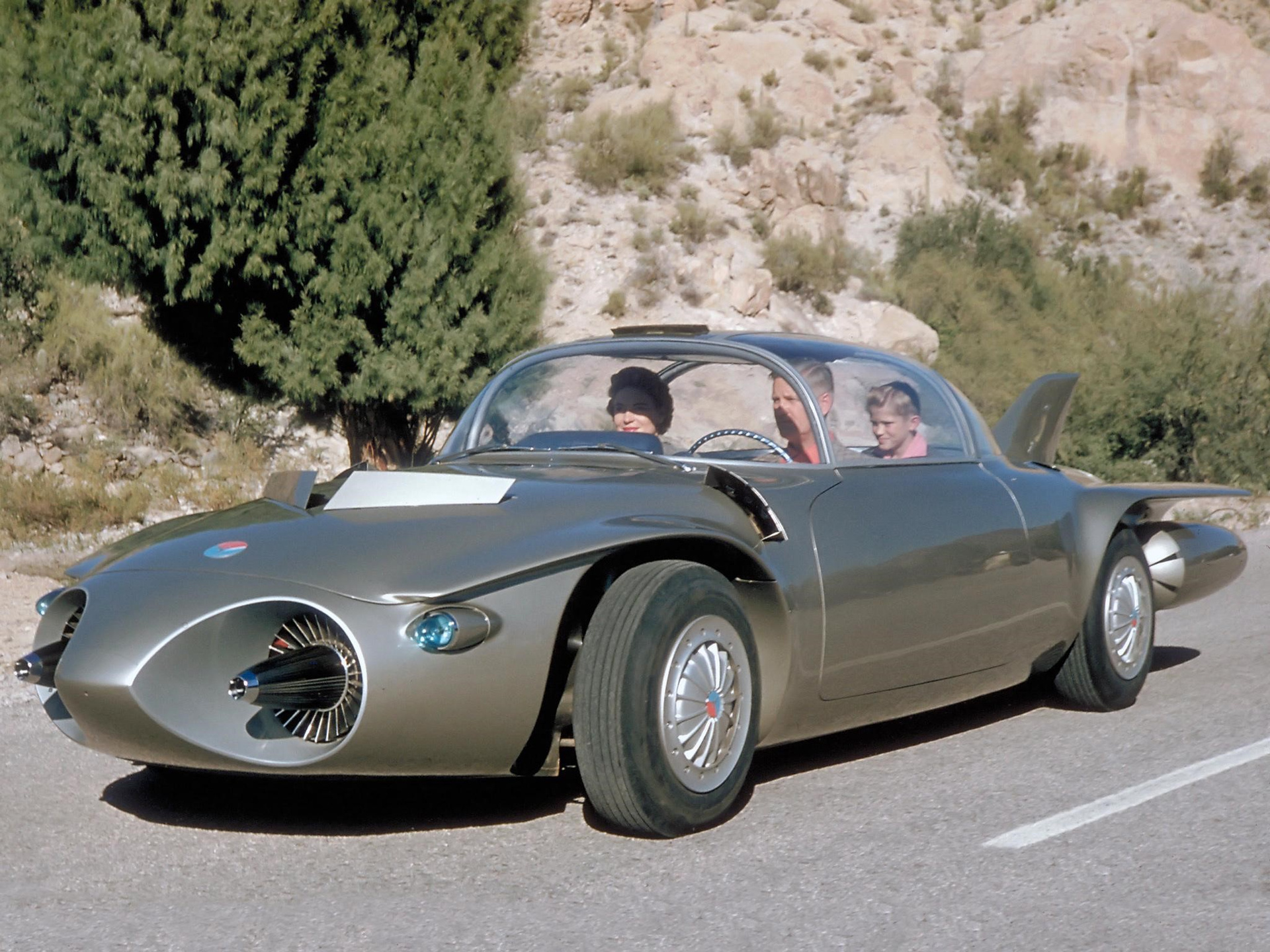
The body was entirely made of titanium. Firebird II received a gas turbine power plant with a capacity of 225 hp and worked on kerosene. The cooler in the recovery compartment lowered the exhaust temperature to 538 ° C. It also has been implemented autopilot and obstacle detection system. Firebird II could accelerate to 300 kilometers per hour. The car also received one of the world's first infotainment systems. It allowed not only listening to the radio and watching programs on a tiny TV in the dashboard, but also displaying some information about the condition of the car, navigation data, tips and reminders.
General Motors had other "space" concept cars, but that's another story.
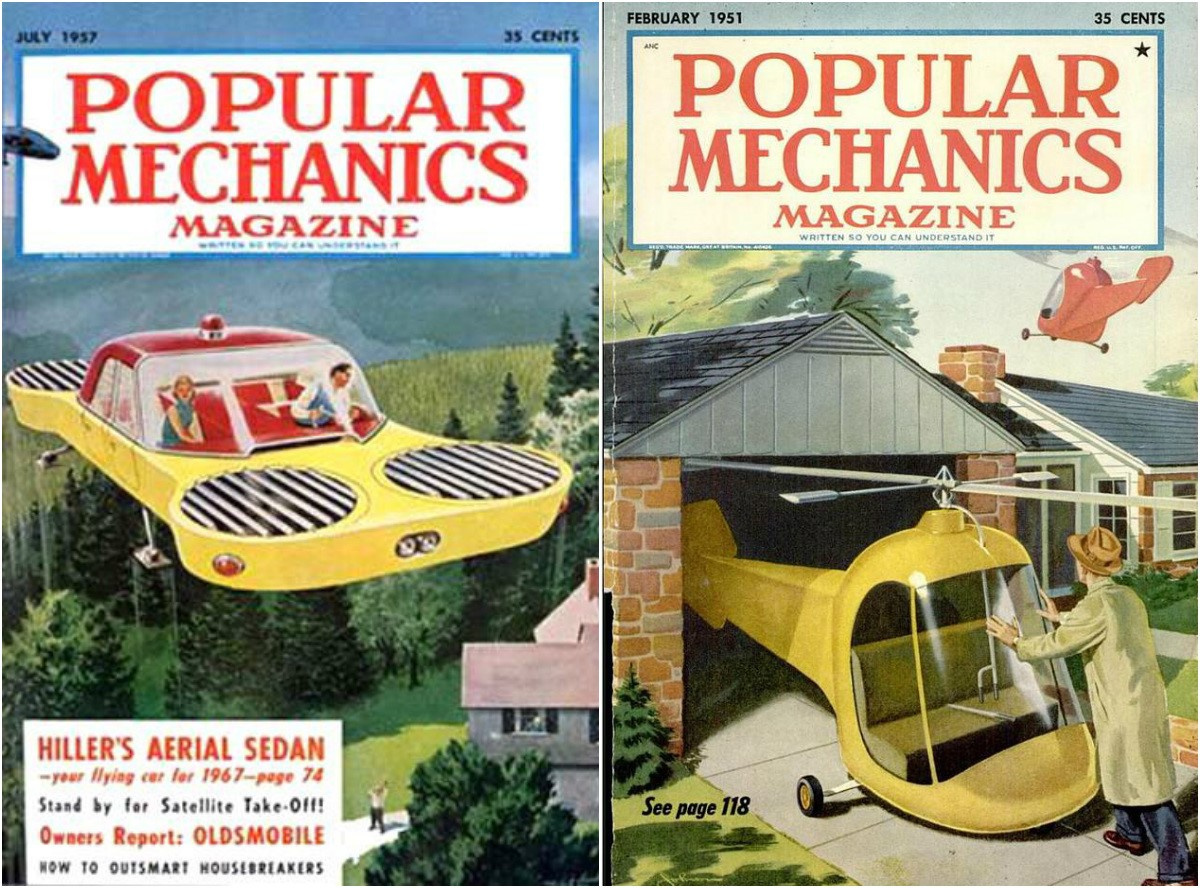
Flying car is one of the most frequent predictions about the future of transport and the ubiquitous topic in science fiction. In the past, many futurists believed that flying cars would appear soon. They say that in the next decades individual transport, which will save the world from traffic jams, will be available to everyone. As we know, even in 2017, a car-plane that can be bought and put in a garage remains a dream. But there was an alternative - a frequent helicopter. Of course, not everyone can afford it, but this is an affordable dream, according to many characteristics (flight range, compactness for storage and operation) corresponding to the ideas of an ideal transport.
Dystopia for animals
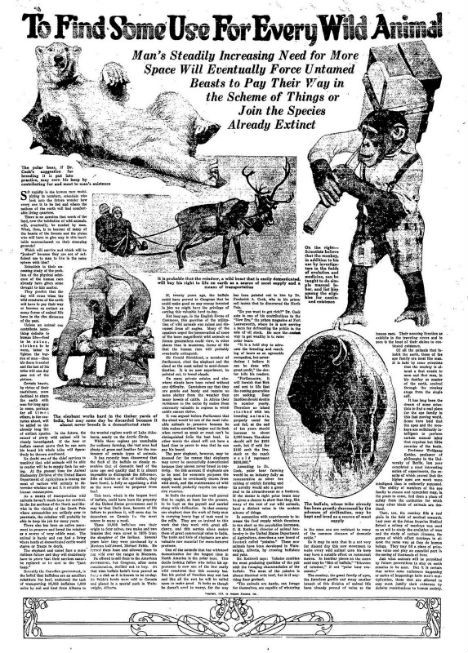
A polar bear, lying upward with its paws, like a domestic cat, and a monkey porter ... What is going on here at all?
In 1926, the newspaper “Galveston Daily News” put an end to the diversity of the animal world. They literally wrote: “The ever-growing human need for more space will force wild animals to join the already extinct species.” The article predicts that animals will no longer exist in the wild, and can only be found in zoos, unless they are used as livestock or pets.
The article, before the predictions of which we have not yet lived, states that rats and mice will be completely exterminated (along with mosquitoes and flies), and that the cows will become so fat that they will move slowly like pigs.
Fortunately, the scary forecast did not come true. On the other hand, in the world there are tendencies related to the human impact on the environment, which do not allow to completely dismiss this prediction.
Utopia pro suburb and reality
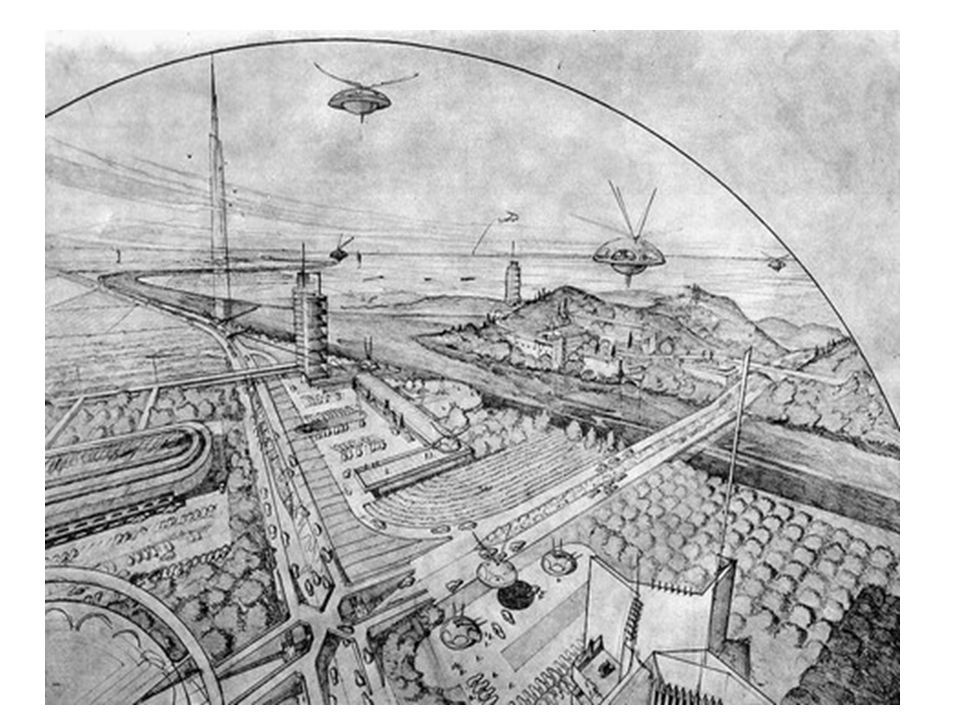
First, look at the typical mistake of the past. Yes, in all that concerns cities, forecasters were wrong more than ever. Practice has shown that cities change at a surprisingly slow rate.
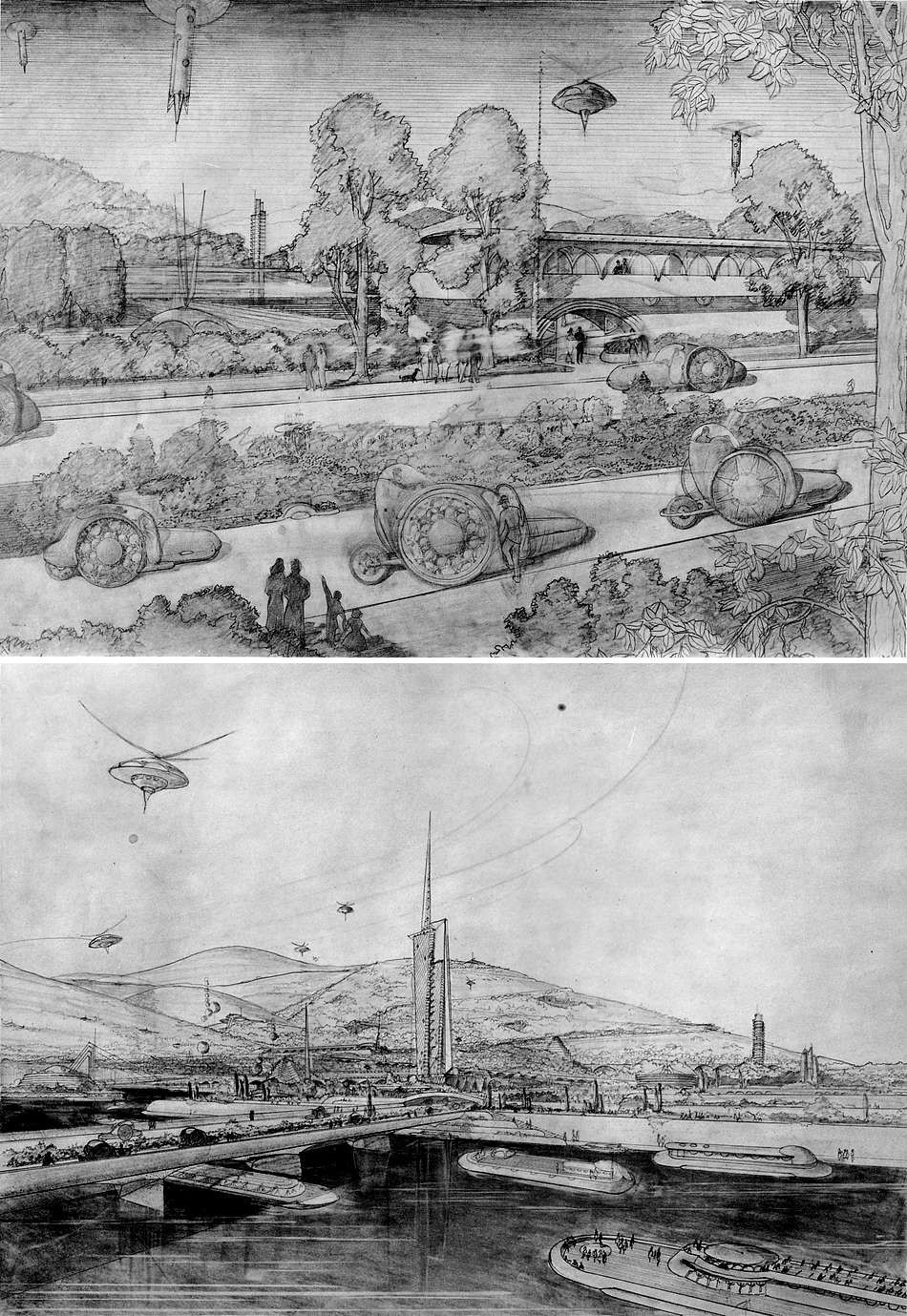
American innovator Frank Wright in the early 1930s portrayed the concept of Broadacre City - one of the first projects of the "ecological city". No cars, noisy crowds, industrial buildings - everything is very similar to life in a quiet peaceful suburb. The suburbs seemed utopian for people living in overcrowded, smoke-filled cities. Wright believed that thanks to a quiet life in peaceful suburbs, people not only live much longer, but an average of one or two inches higher due to better health. In fact, the suburbs would be so beneficial to humanity that urban housing was completely eliminated, and the construction of multi-storey block skyscrapers would become illegal.

But there are also reverse examples, when ideas about the architecture of the cities of the future are surprisingly accurate. In this scene from a science fiction film of the 1930s, past visionaries portrayed the 1980s New York. 250-storey buildings, wide streets with multi-lane traffic, multi-level traffic - very close to the modern state of the city.
Closer than we think
In the 1950s and early 1960s, artists created an idealized version of the future. In 1958, the illustrator Arthur Radebo invented the comic “Closer Than We Think”, in which he showed his vision of the brighter life of future generations. The beginning of the space age brought a touch of optimism during the years of paranoia and fear of atomic war. In the works of Radebo there was no place for the communist threat, killer robots and aggressive aliens.

Highway connecting Russia and the United States. Such a project really existed.
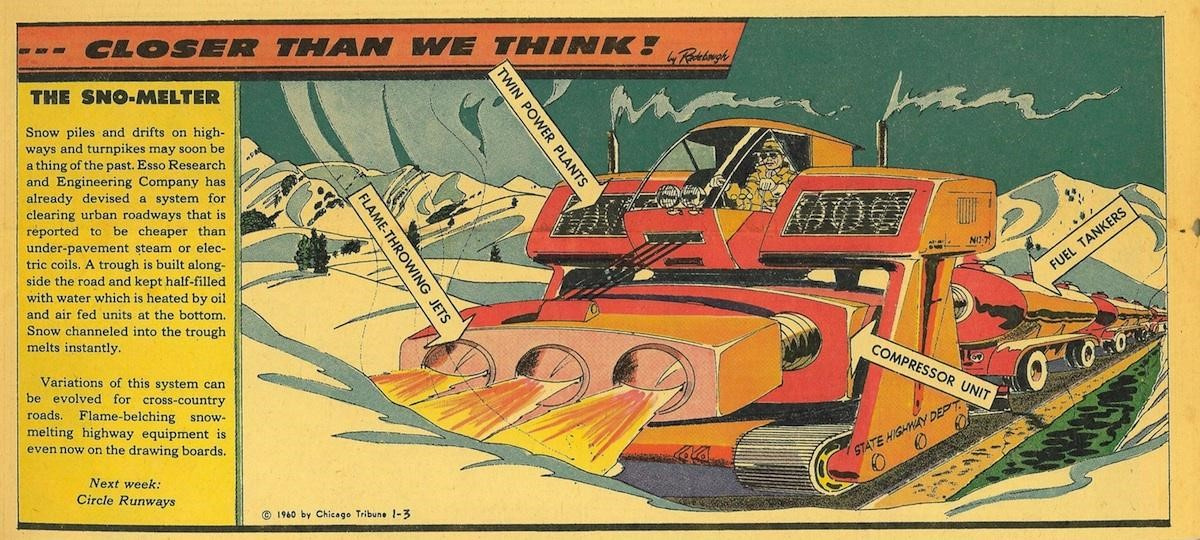
Snowblower, burning snow in his path. Pure fiction.
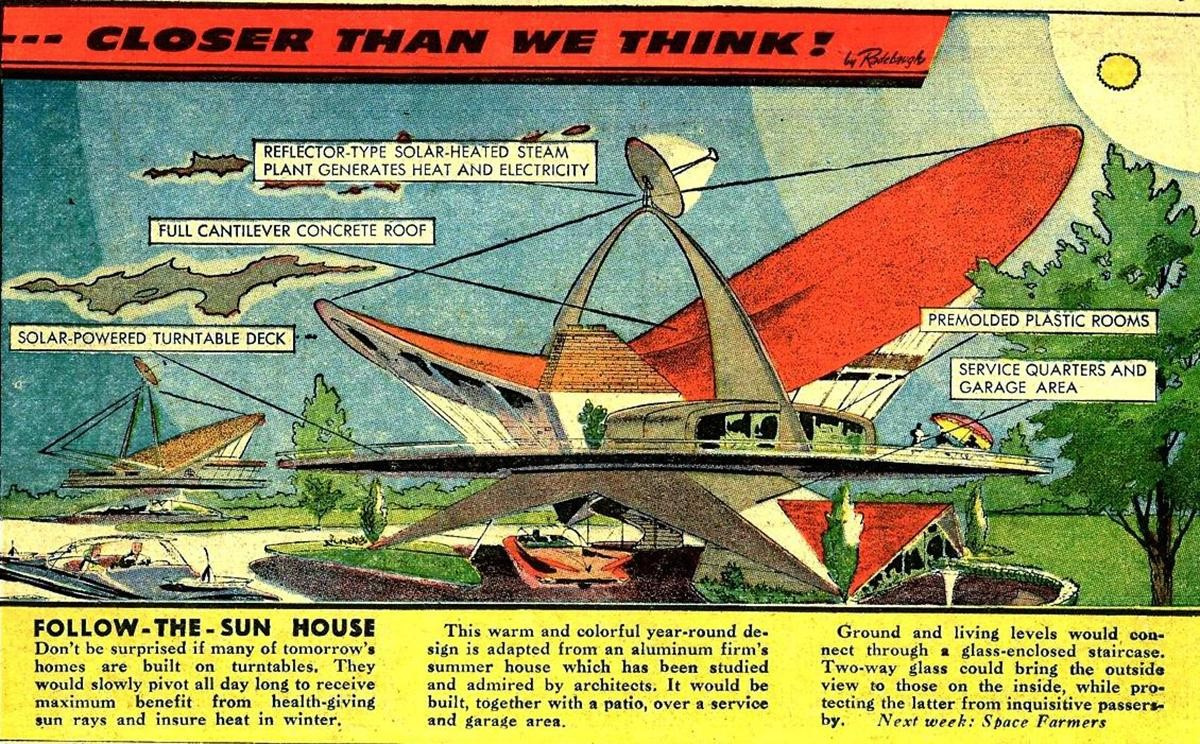
A house that rotates after the sun to get more energy. Now solar panels cope with this task more efficiently.
However, it should be noted that, to a certain extent, the forecast came true - instead of the house itself, in individual energy solutions, the turbine blades of a steam engine working under the influence of the sun's rays rotate, as a result of which electricity is produced. A steam engine is also a way to accumulate solar energy: water is heated in excess pressure tanks with excess heat — in this state, the heated water does not evaporate, but accumulates heat.
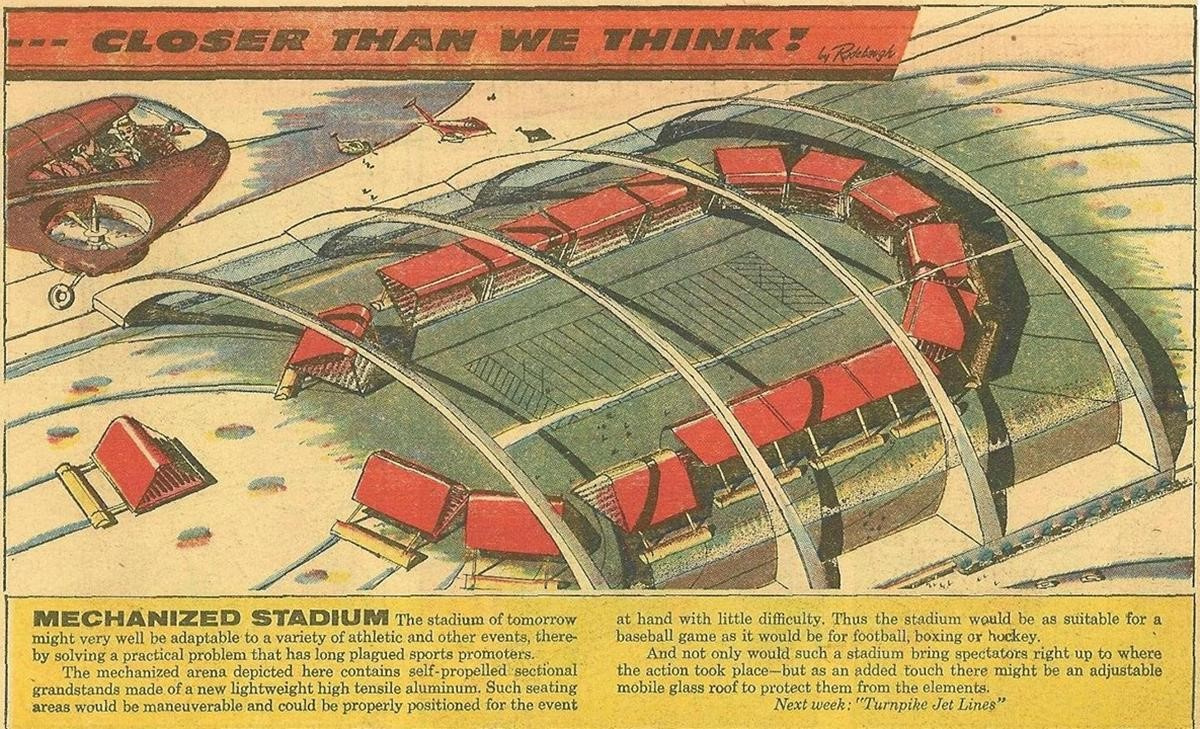
Indoor stadiums serving various events - here hit into 10 out of 10.
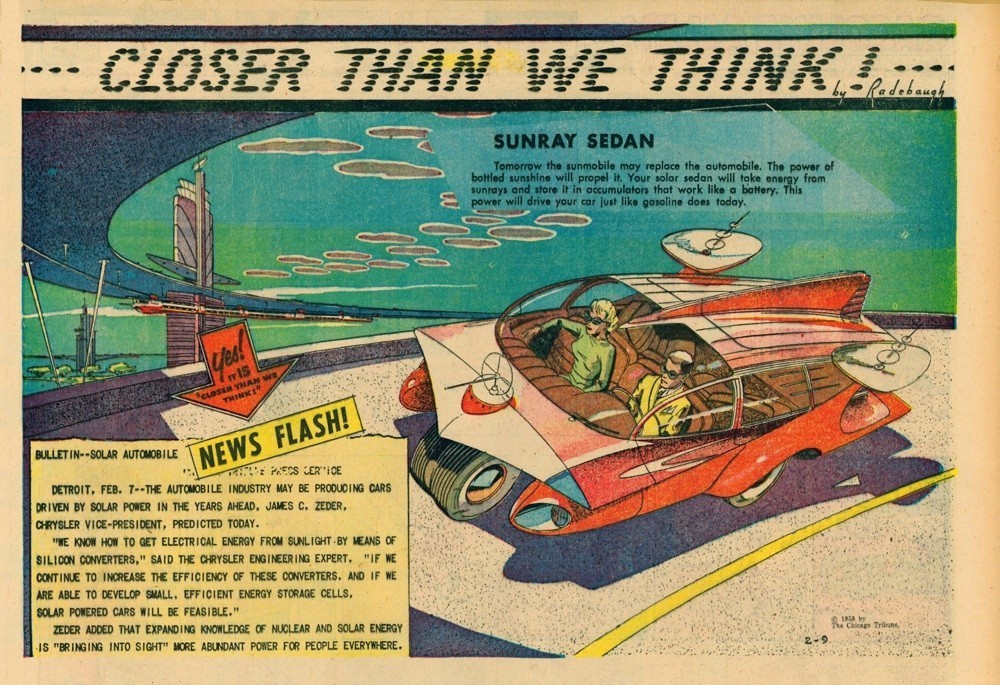
Cars moving at the expense of solar energy. Now there are a lot of such projects. In 1982, inventor Hans Tolstrup in a solar powered car “Quiet Achiever” crossed Australia from west to east at a speed of only 20 km / h. In 1996, the winner of the 4th International Sun Racing Mobile Rally drove 3,000 km at a speed of almost 90 km / h, and in some areas - 135 km / h.
With all the obvious successes of solar vehicles, this forecast can hardly be called 100% fulfilled. Yes, the testers set a lot of world records for distance and speed of movement, but such machines remained the lot of enthusiasts. With our current technology, a conventional gasoline internal combustion engine remains a more efficient solution. Solar panels can not provide energy at the right level ordinary car for everyday trips. In addition, in regions with a small number of clear days, light energy remains only an auxiliary source of electricity.
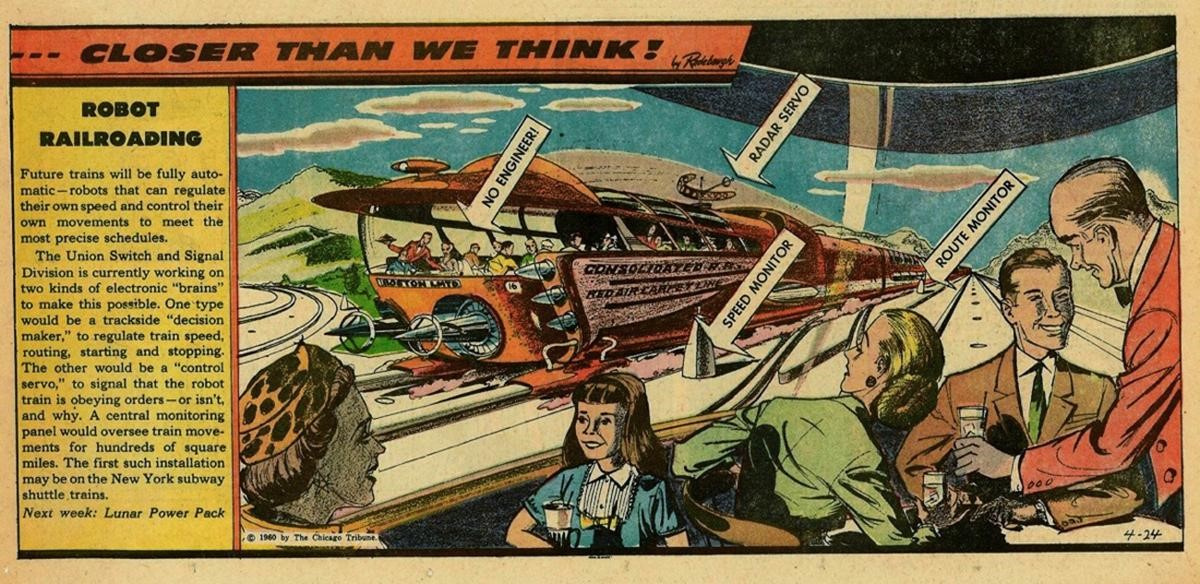
Computerized train.
Radebeau has become one of the most famous futurist artists. Comics about the future, he released every week from 1958 to 1962. Earlier, in 1940, Radebo painted a series of advertising posters for the company Bohn Aluminum & Brass Corporation. Images from these posters not only remain one of the most expressive examples of the futuristic graphics of their time, but also show the world of today with amazing accuracy.
Accurate prediction
Many works even in this collection can be called a correct prediction only with a reservation. However, among the millions of paintings, comics, posters, illustrations created before the middle of the 20th century, there were also those that do not cause doubts in their futuristic authenticity.
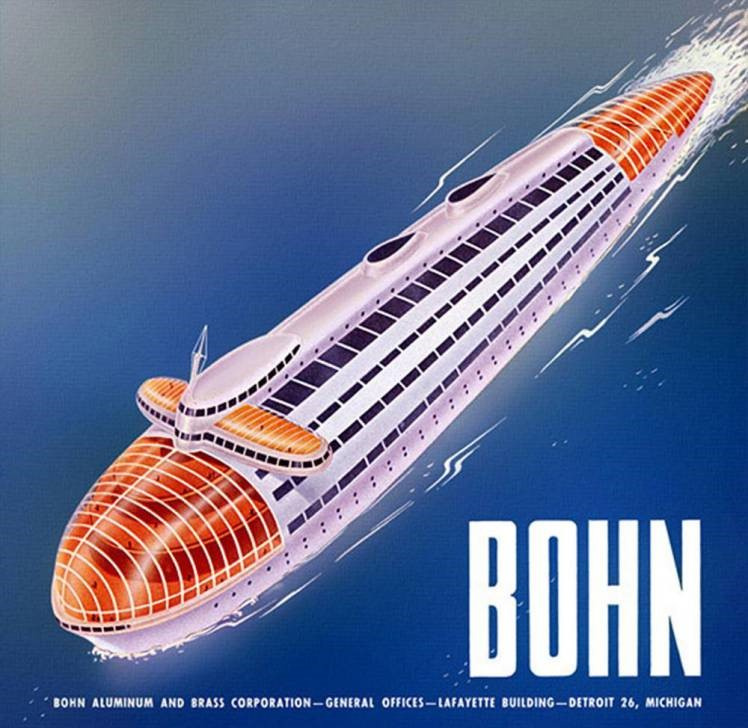
So Arthur Radebeau depicted the ocean liner of the future in the 1940s.
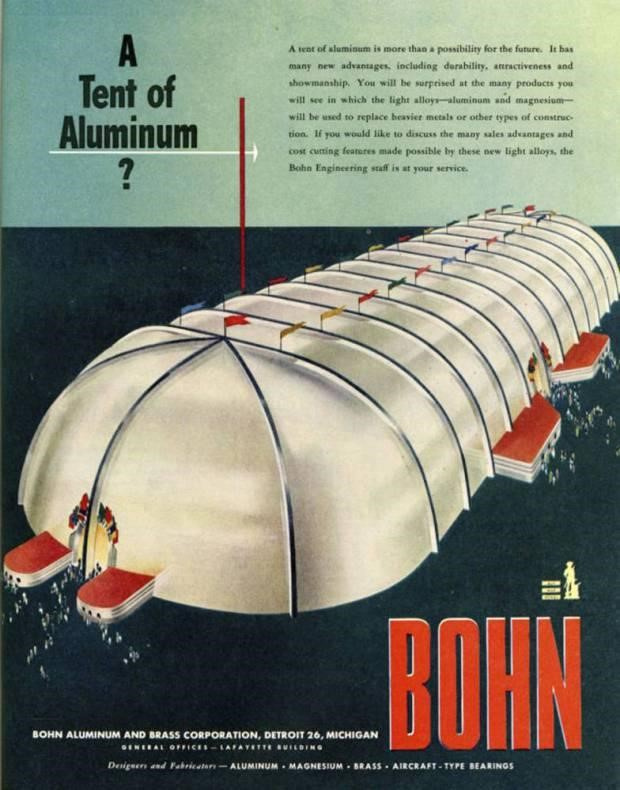
Stadium for a huge number of people.
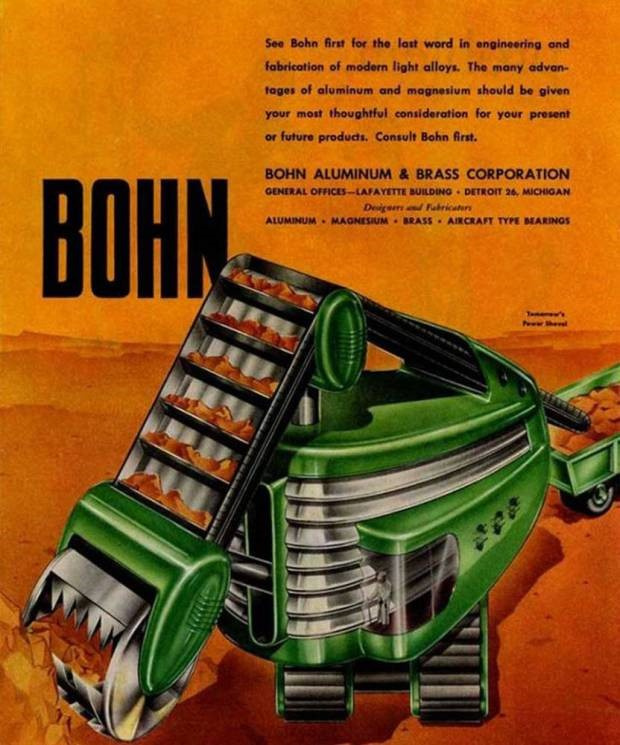
Futuristic combine.
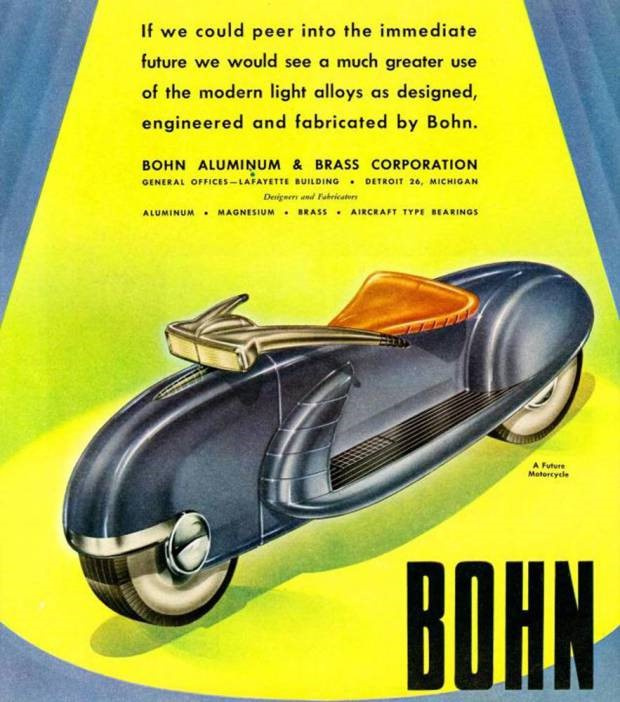
Motorcycle with aerodynamic body.
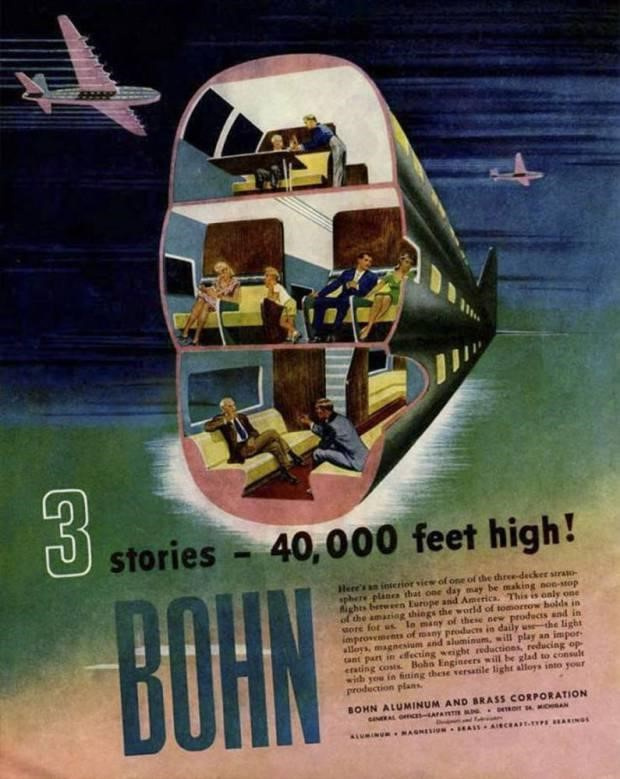
High-rise aircraft.
And a few dozen similar posters.
The world of comics: dark and real futurism
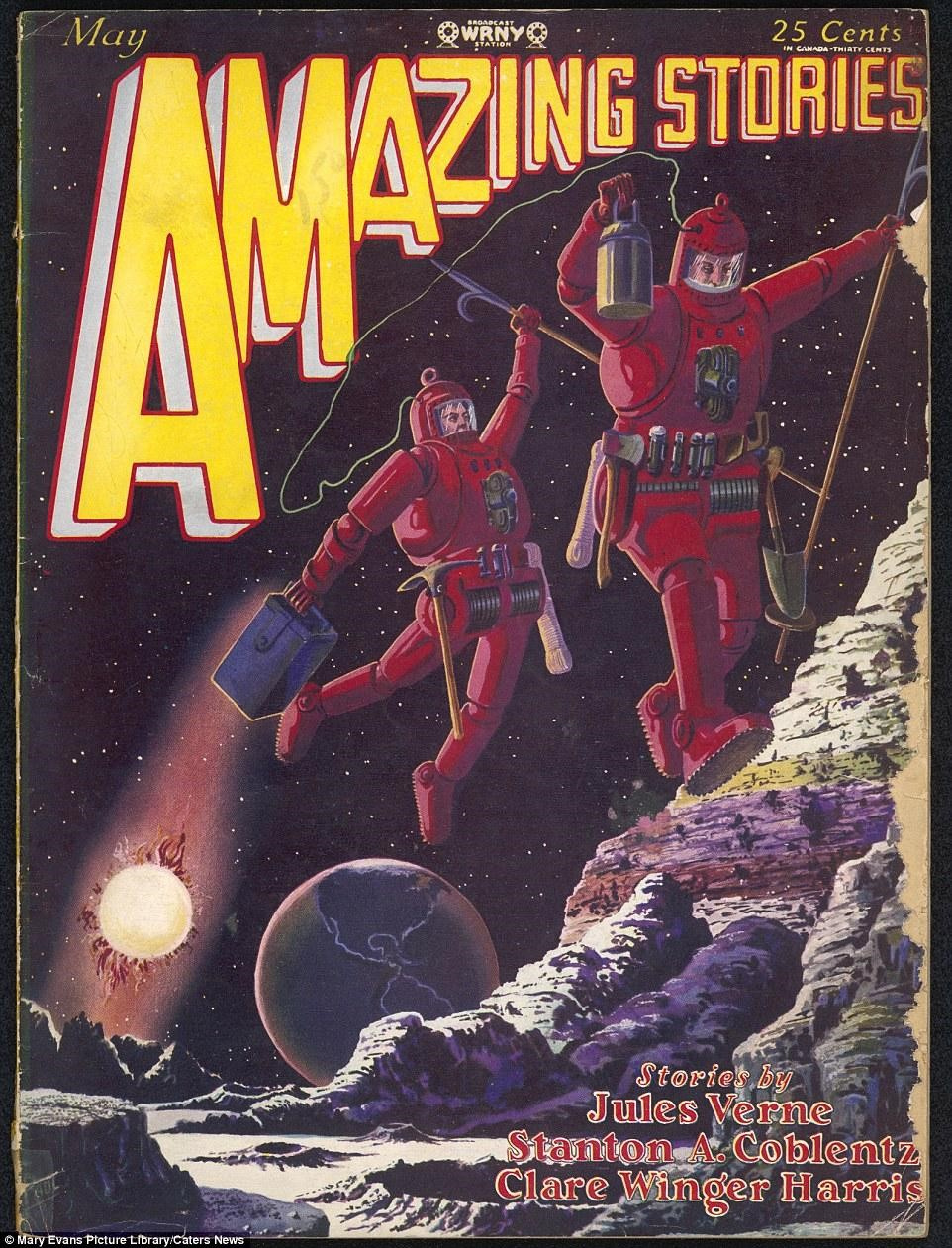
The landing on the moon, depicted in 1929.
Not only Radebo was drawing comics about the future. Works published more than 80 years ago, between 1929 and 1939, predictably predicted life in the 21st century, frighteningly, including plastic surgery, walks on the moon, and artificial organs.

Artists predicted that in the future scientists will develop machines that read minds and project them onto the screen. Advances in neural interfaces have made these fantasies a reality.

In the 1939 comic book, A World Without Death, a patient with an artificial heart was shown.
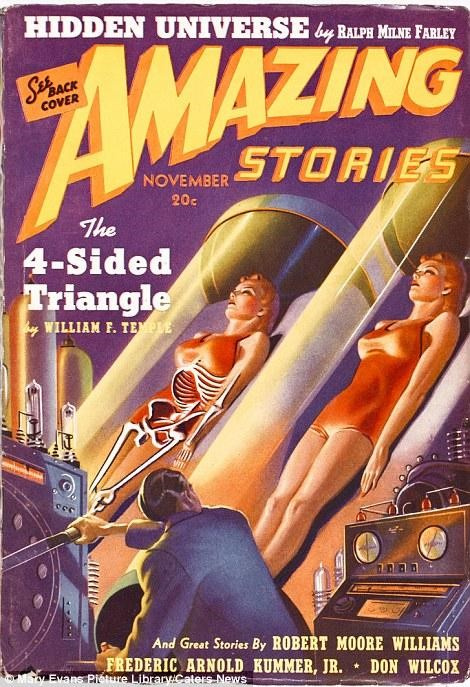
On the cover of the 1939 comic strip, a scientist is drawn who clones the body of a young woman in his laboratory.
French futurism
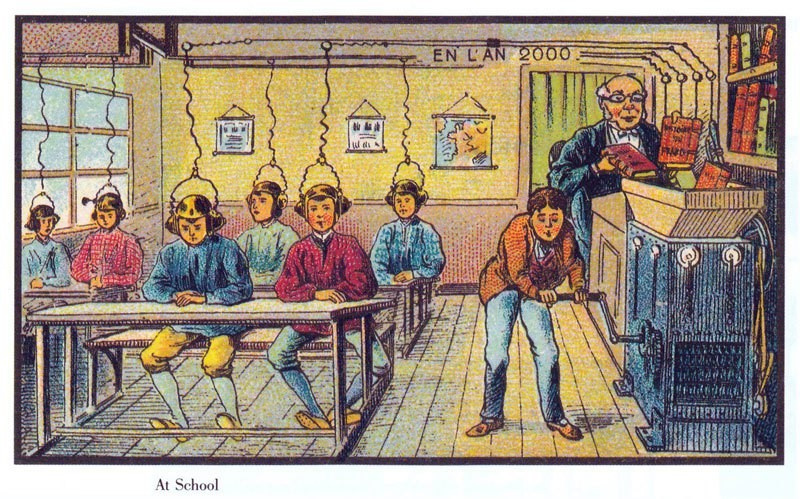
A series of illustrations, En L'An 2000 (“Year 2000”), was prepared for the Paris International Exhibition of 1900. She was forgotten for many years, but in 1986 writer Isaac Asimov came across drawings. He prepared the famous book “Days of the Future: A Vision of 2000 by People of the XIX Century”. Now a complete selection of drawings can be found on the Wikimedia Commons website - some of these predictions can be called very accurate, or close to reality.

The Frenchman Albert Robido (the image of a videophone from his book of 1894) was both a science fiction writer and a talented artist. In the 1880s, he wrote a trilogy of novels about the future, becoming the ancestor of steampunk. Often the usual phrases from his books can be interpreted as gloomy prophecies, for example: “What a marvelous sight for our descendants will be a living horse - a spectacle completely new and full of the greatest interest for people accustomed to fly through the air!”
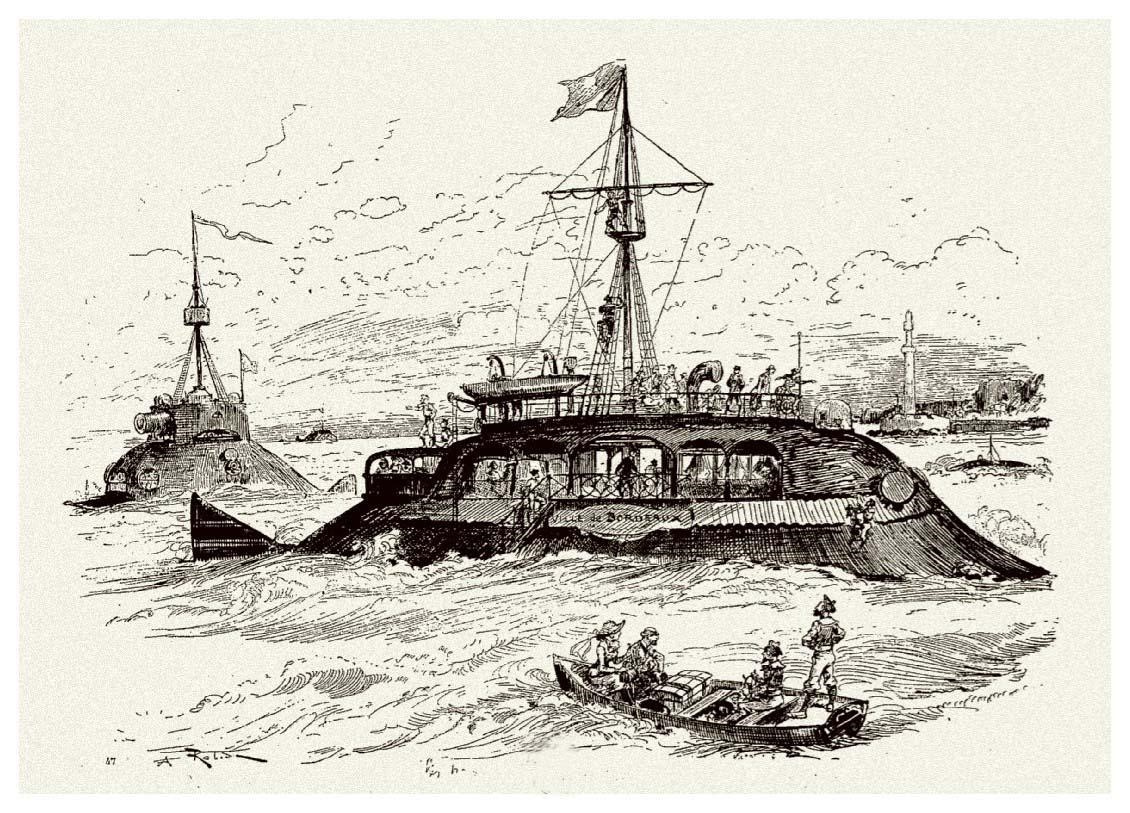
Robido predicted (and in some places illustrated) submarines, tanks, battleships, aviation, videophones, distance learning, remote purchases, intercoms, video intercoms, video disks, video libraries, television, reality shows, video surveillance systems (including the concept of Big Brother), chemical weapons , bacteriological weapons, gas masks, nuclear weapons, man-made disasters, skyscrapers, drywall, social changes (women's emancipation, mass tourism, environmental pollution), other things and phenomena.
Many technologies that 50, 100 or 200 years ago seemed like a wonderful (or terrifying) future are now perceived as a given.
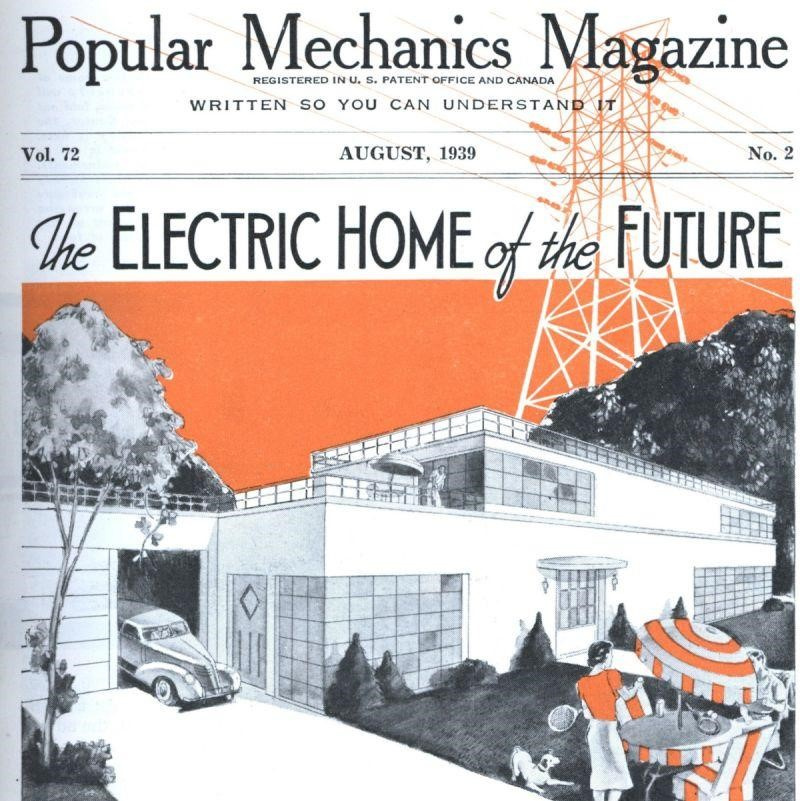
The article “Electric House of the Future” from Popular Mechanics magazine in August 1939 told about housing, which by today's standards at the level of technology can not even compete with the typical “smart home”.
Fantastic illustrations created by people such as Klaus Burgl (Klaus Burgle), Kurt Roschl (Kurt Roschl) and dozens of other artists, to this day remain unrealized fiction. Perhaps the reason is that too little time has passed. The shape of the future has already been drawn, and we only have to realize it, if possible in bright colors.
All Articles